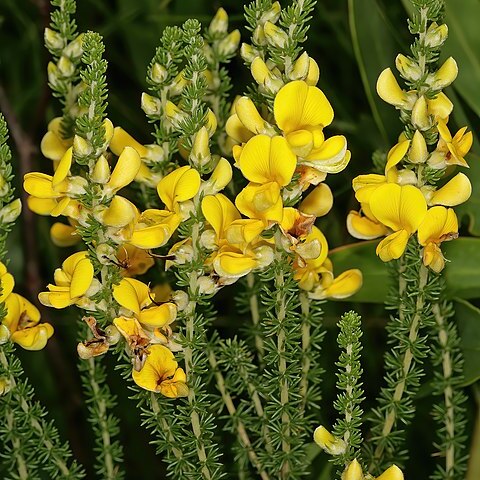Erect or sprawling shrublet, 0.1-0.6(-1.0) m high; weak, leafy branch ends, young branches densely white-hairy. Leaves green, ± sparingly pubescent. Leaflets variable, 1-6(-8) mm long, spreading, linear or slightly incurved, subterete, not rigid, acute to acuminate. Inflorescences unifloral, with 2-4 flowers scattered below leafy branchlet tips. Flowers relatively large, exceeding leaves. Calyx silky; lobes needle-like. Petals bright yellow-orange, often reddish centrally; outer side of wing and keel blades pubescent. Flowering time Oct.-Dec. Pod obliquely and narrowly triangular-ovate, woolly.
Erect or sprawling shrublet to 1 m. Leaves 3-foliolate, leaflets linear, subterete, almost straight or slightly incurved, glabrous or subglabrous. Flowers single on short shoots, scattered, bright yellow or partly orange, red or purplish, keel hairy, calyx silky, lobes awl-shaped, subterete, glabrous near tips.

